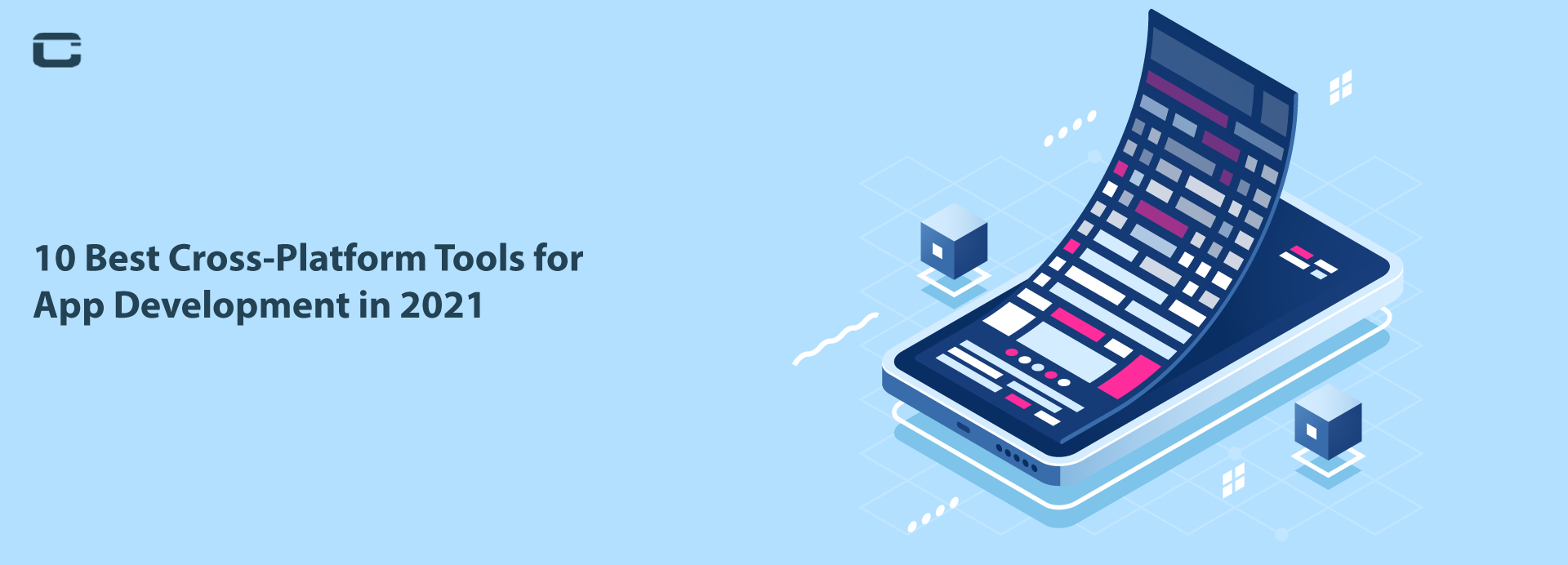In this era of the fast-paced digital world, devices that are running multiple operating systems across the world are endless. For any business to connect with a larger number of audiences, it has become essential to launch mobile apps on multiple platforms. Cross-platform app development has made this possible for businesses around the globe.
For you to be able to comprehend how beneficial cross-platform development for your business is, you must understand what a cross-platform framework actually is.
In our world of mobile app development, you have to develop for several device platforms like iOS vs Android. Conventionally apps for these platforms are developed separately since one operating system uses a code language that is not recognized by another operating system. But what if I tell you that you can program in one universal language that could be used on another device’s platform? That’s right!
“Cross-platform framework” gives you the liberty to do just that.
Let us look at the concept of cross-platform development before jumping onto the best cross-platform development tools you can use to grow your business.
What is a Cross-Platform Development?
Well, whenever a developer builds a native app, they are required to build an app for Android and iOS each using the specific programming language of the said platform. Like, to build an app for the following platforms, the developer needs to use specific language the platform recognizes:
- For iOS: Objective C or Swift
- For Android: Java
- For Windows: C# and XAML
Whereas, cross-platform development framework gives a developer the flexibility to develop the app using a universal language which can then be transported to different platforms. This lets one app function across multiple platforms.
How is Cross-Platform development going to be beneficial for your business?
With cross-platform development, you can lower your expenses. As we have already mentioned above, mobile app developers need not code in several separate languages while developing an app. Moreover, the bugs that are displayed in the prevalent code base are needed to be fixed only once. This saves you the money you would have spent on getting apps developed for separate platforms.
- Developing a single platform does not take as much time as developing two or three platforms, so the time to market is reduced.
- The development tools a developer develops an app with that is familiar since they deploy common programming languages.
- A cross-platform framework is ideal for prototyping as it allows a faster time to market your app on more than one platform.
Over the years, cross-platform development has been successful in becoming one of the most useful software development trends. Developers are enabled to develop apps for multiple platforms using the same code, hence saving the time, efforts put into developing the app, and of course the cost of development.
What makes Cross-Platform development better than developing an app in the traditional way?
The answer to this question simply would be the fact that with a cross-platform framework, a developer is not compelled to use a separate code base while developing an app for different platforms. As the competition in the market increases, brands are looking for ways to improve their business. Not only that, people are looking for more convenient ways to perform their day to day tasks, and businesses are looking for ways to provide that convenience to their customers by developing mobile applications. Any business looking for app development needs to consider cross-platform development. While it is undoubtedly easy and simple creating native apps for each operating system, it is also expensive and time-consuming.
Here are the stats gave in a study done by Statista on cross-platform development frameworks used by mobile app developers throughout the world in the years 2019 and 2020.

(Source: Statista)
Some Major Benefits of Cross-Platform Development Frameworks
1. Reusable Code
A cross-platform development framework gets more attention in the app development industry as it has a code reusability advantage over building native app development. Mobile app developers can write native code simultaneously for more than one operating platform or system without any hassle. Since the code base is reusable, it leaves developers with more time to pay attention to the customizable features of the app development without having to put in the extra effort.
2. Cost-Effective
A cross-platform development framework enables the developers to reuse the code for multiple platforms, therefore, saving on the cost of operating multiple developers for a different version of an app. You do not need to spend money on several tools and technologies. You get to have an app that works on all platforms (Android and iOS) at the cost of one app development.
3. Faster App Development
A cross-platform development framework is one of the fastest ways to develop an app. For the reason cross-platform Android, iOS apps are enforced with a single base code, it saves a lot of time during the development process; expanding the pace of the market from market to market.
4. Convenience
The tools that come with a cross-platform development framework save developers the trouble of learning several programming languages providing them with a substitute to all the various technologies.
5. Maintainable Cost
Any time you wish to update your app, all you need to do is get your code updated and the modifications will be put in sync and reflected in each app across multiple platforms.
6. Market Reach
When you launch your app on multiple platforms such as iOS and Android, a wider network will be broadcasted, improving your odds of having a larger user base and therefore providing higher revenue and higher ROI.
Since you have read the article this far, We will ask you that are you also interested in developing an app using a cross-platform framework? If your answer is yes, then we highly recommended you to hire an expert level cross-platform app development company that uses the below listed cross-platform tools.
10 Best Cross-Platform Development Tools
1. Flutter
Flutter is one of the most popular cross-platform development frameworks right now. It is Google’s baby which is written in the dart language. This is a major reason why developers find it reliable for developing purposes.
Besides, Flutter is an open-source mobile application development SDK. Another reason for its popularity is that Flutter has the option of 2D rendering, Skia. Flutter apps fully amass to native code which is not the case with hybrid or React Native apps. It can be the best cross-platform development tool for a business that chooses to build a custom mobile app on both major platforms, i.e., iOS and Android. Flutter’s best feature would be that it supports a widget that helps in augmenting the look of the mobile app.
Pros of Flutter
- Faster app development
- UI that is easy to use
- Offers widgets and liberties
- Responsive
- Clear documentation
Cons of Flutter
- Zero flexibility
- Limited libraries
2. React Native
Forgetting this famous framework known as React Native when talking about cross-platform app development would be unforgivable. React Native supports the JavaScript codebase making it a brilliant choice. This cross-platform development framework is majorly used to write codes that provide a native-like feel to a mobile app capable of functioning on both Android and iOS platforms. Several features come implemented in React Native and offer practical usability. This makes it a much better option than many cross-platform development frameworks out there.
Pros of React Native
- JavaScript for faster programming
- Enables codebase sharing
- Great performance
Cons of React Native
- Not entirely usable for cross-platform development
- Compatibility issues
- Depends upon expertise in the case of native modules
3. Appcelerator
Appcelerator is without a doubt one of the best cross-platform development frameworks you can ever use. It gives good outcomes by helping with an increased pace of the overall process. Developers choose Appcelerator due to its practical usage. Similar to Flutter, Appcelerator comes with an open-source SDK. It can be used to build hybrid apps and HTML 5 applications as well. Just like React Native, Appcelerator uses JavaScript as its codebase and supports platforms like Android, BlackBerry, and iOS.
Pros of Appcelerator
- It is web-oriented
- Fast prototyping
- Easy to use
Cons of Appcelerator
- No freemium
- Limitations regarding flexibility
- Complex
4. Ionic
This cross-platform development framework stands apart from all other cross-platform development frameworks because of its combination of several languages it provides. Developers prefer using this framework to develop a user-friendly app interface and user-friendly features. Moreover, it is an open-source front-end framework which makes it a great choice. Developers can modify the development process as per their exclusive ideas. It is based on SaaS UI, the best framework as it is designed especially for mobile operating systems.
Pros of Ionic
- Easy to grasp
- Abridged documentation
- Fast prototyping
- Singles codebase for multiple platforms
Cons of Ionic
- Inadequacy in overall performance
- Issues related to security
- Plugin-dependent
5. Xamarin
Xamarin is nothing like the cross-platform development frameworks we have talked about till now. With Xamarin, the developer has the option to use 90% of the code to build in three different platforms, Android, iOS, and Windows. Xamarin’s base language is C#. It gives a better product than most other languages that exist. Xamarin also gives a native-like gorgeous experience to your app.
Pros of Xamarin
- Its performance is close to a native-like performance level
- Easily maintained
- Does not need more than one stack of technologies for multiple platforms
Cons of Xamarin
- Limited access to open-source libraries
- High-cost factor
6. PhoneGap
PhoneGap offers language support like HTML5, JavaScript, and CSS making it one of the best cross-platform development tools. PhoneGap has changed the mobile development field drastically. Not only are you able to develop apps for all major platforms, but you can also integrate features in the form of add-ons. PhoneGap gives you the option of working without any hardware barriers.
Pros of PhoneGap
- Fast testing
- Fast deployment
- The single code base for several platforms
Cons of PhoneGap
- Performance is not as good as other tools in the list
- Lacks UI widgets
7. Node.js
This is an exceptionally powerful framework for developing a cross-platform mobile app. All the apps that are designed with Node.js are extremely efficient and responsive. The base language of Node.js is JavaScript based on the Chrome V8 JavaScript engine. Also, this cross-platform framework can handle several coexisting tasks. It has an inbuilt library that simplifies the entire process of development.
Pros of Node.js
- Reusability of code and code sharing
- Decent stack of technologies
- Fast performance
Cons of Node.js
- Callback hell concern
- Bad performance when it comes to heavy work
8. Sencha Touch
Sencha Touch comes with an inbuilt native-looking theme for all the major platforms such as iOS, Android, and many more. It delivers results in the form of efficient and fast apps. The apps developed with Sencha Touch have fast hardware acceleration techniques. It is even possible to develop large business apps with Sencha Touch. Maintenance of these apps does not seem like an issue either. It also has inbuilt Cordova integration.
Pros of Sencha Touch
- Supports community
- Fast performance
- Abridged documentation
- Easily used with plug-ins
Cons of Sencha Touch
- Heavy DOM elements
9. Corona SDK
Corona SDK is a lot similar to Flutter, the first cross-platform framework mentioned in this list. Programmers use Corona SDK to develop apps on all the major platforms. What makes it reliable is that it offers a backend framework language, Lua.
Lua is a lightweight app development language when compared to other languages. It focuses on only important aspects of development like extensibility, portability, scalability, etc.
Pros of Corona SDK
- Writing the code once is enough
- Does not lag
- A large number of plug-ins
- Easily learned and used
Cons of Corona SDK
- Kind of costly
- Does not provide a way to integrate native plug-ins
10. NativeScript
This again is a widely preferred cross-platform development tool that can be used for both Android and iOS. A developer can develop native apps using Angular, Vue.js, TypeScript, and JavaScript with NativeScript. This open-source framework also enables developers to customize the user interface according to different screen types. There is also no need for any third-party solutions.
Pros of NativeScript
- Great performance overall
- Large depository of plug-ins
Cons of NativeScript
- Provides no live sync
- Everything runs on a single thread
In a Nutshell
For your business application to reach a large number of audiences, it needs to be available on multiple platforms. Without thinking much, leverage the above mentioned top 10 cross-platform development tools. Like we have been saying all through this article, cross-platform development tools are quintessential for saving cost, time, and needless effort.
Cross-platform app development companies like Cypherox develop and deliver desired apps for all the trending platforms like iOS, Android, Windows, etc. We are the classic choice of SMBs, startups, for cross-platform app development. Connect with us today for the development of your cross-platform app.






